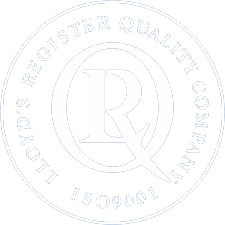Casting
manufacturing metal parts
Get insights into the different production methods for casting metal parts to understand which suits your part best.
Exploring metal casting: A comparative overview
Metal casting is a fundamental aspect of modern manufacturing. It provides the versatility needed to produce components across various industries with precision and efficiency.
Each casting method offers unique advantages and is suited to specific applications based on factors such as size, complexity, material, price and production volume.
Dive into the comparison to get insight into the possible features of the different casting methods
| Sand casting | Die casting | Investment Casting (Lost-Wax Casting) | Permanent Mold Casting | MIM Casting | Pressure die casting | |
|---|---|---|---|---|---|---|
| Description | Sand casting is the oldest and most commonly used method of casting. It involves creating a mould from a sand mixture and pouring molten metal into it. Sand casting is versatile and can cast a wide range of metals and alloys. | This method uses high pressure to force molten metal into a steel mould or die. It is especially suited for casting metals with low melting points, such as zinc, aluminium, and magnesium. Die casting is known for producing high-quality parts with good dimensional accuracy. | This process involves creating a wax pattern, which is then coated with a refractory ceramic material. Once the ceramic material hardens, it forms a mold for the metal casting. The wax is melted out and molten metal is poured into the cavity. Investment casting is noted for its ability to produce components with high precision, intricate details, and excellent surface finish. | Also known as gravity die casting, this method involves pouring molten metal into a permanent mould shaped from steel or cast iron. It is reusable and can produce a higher dimensional accuracy and surface finish than sand casting. Permanent mould casting is typically used for metals like aluminium, magnesium, and copper alloys. | MIM is an advanced metal forming technique that merges the flexibility of plastic injection moulding with the mechanical and thermal properties of metals. This process is particularly well-suited for producing small, complex metal components in large quantities. MIM is characterised by its ability to produce parts with high density and superior strength comparable to wrought materials. | Pressure die casting is a preferred method for mass-producing parts that require high dimensional accuracy and complex shapes. This process is characterised by forcing molten metal under high pressure into a mould cavity, which is machined into dies. It’s particularly suited for applications requiring high-volume production of detailed parts, such as automotive components, hardware, and electronics casings. |
| Tolerances | Moderate (±0.03 inches per inch) | High (±0.02 inches per inch) | Very high (±0.004 inches per inch) | High (±0.015 inches per inch) | Very high (±0.003 inches per inch) | Very high (±0.002 inches per inch) |
| Size of parts | Small to large (from ounces to several tons) | Small (a few ounces to about 75 pounds) | Small to medium (a few ounces to about 1000 pounds) | Medium (up to a few hundred pounds) | Small (typically less than 100 grams) | Medium to Large (From a few ounces to about 75 pounds) |
| Strength | Medium to High | High | High | High | High (comparable to wrought materials) | High |
| Initial investment of production | Low | High (due to high costs of dies and machinery) | Medium to high | Medium | High (due to the cost of moulds and preparation of metal powders) | High (due to the cost of creating and maintaining precise die moulds) |
| Price of parts | Low | Medium to High (depending on production volume) | Medium to high | Medium | High (Especially beneficial when complexity and volume justify the investment) | Medium to High (cost-effective for large production runs where the initial high tooling costs are offset by the volume) |
| Achievable intricacy | Low to Medium | High | Very high | Medium | Very High | High (allows for complex shapes with thin walls and tight dimensional tolerances) |
| Possible usable materials | Nearly all metals, including iron, steel, aluminium, bronze, etc. | Non-ferrous metals, predominantly zinc, aluminium, magnesium, and copper | Steel, stainless steel, titanium, and precious metals | Non-ferrous metals, especially aluminium, magnesium, and copper-based alloys | Ferrous metals, stainless steel, titanium, and some special alloys | Primarily non-ferrous metals such as aluminium, magnesium, and zinc alloys |
Choosing the correct production method highly depends on the specific part you’re manufacturing.
Therefore, feel free to get in touch and get advice on your specific part or development process.
Need advice on which production method to use for your specific part or need a manufacturer?
Get in touch



